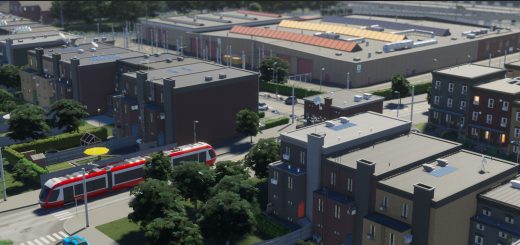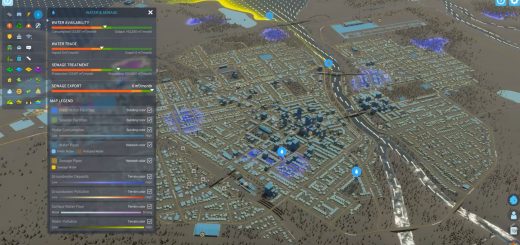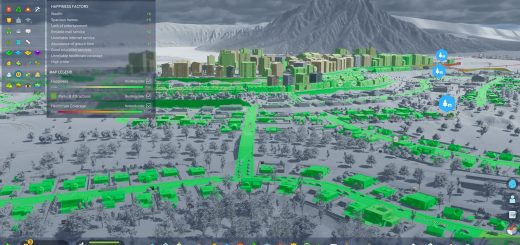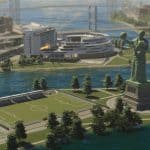
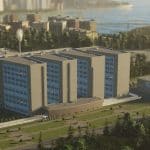
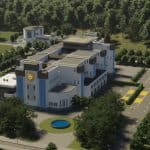
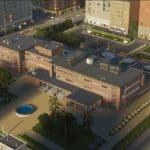
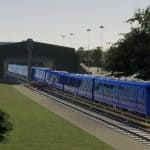
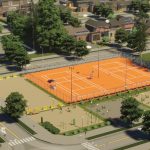
Cities Skylines 2: Police, Transportation, Parks
Police maintain urban peace, with their establishments, whether it’s local precincts or the main Police Headquarters, acting as deterrents to rising crime in their vicinity. When police vehicles patrol the streets, not only do they promote law-abiding behavior among citizens, but they also reduce the likelihood of crime on the routes they cover. Given no specific zones, these police vehicles have the ability to oversee the entire city.

Upon encountering crimes, police swiftly intervene, aiming to apprehend the perpetrators in the act. Once detained, these wrongdoers are incarcerated, and some face verdicts that require prison sentences. These convicts are then transferred to a nearby prison or to an external facility if there’s no local prison in place. Upon completing their sentences, they re-enter the city with their criminal records cleared. Prisons, interestingly, double up as production units, churning out materials for the city’s manufacturing sector.
Each edifice in the city carries with it a certain risk of being chosen for illegal activities, termed as crime probability. This element not only marks the likelihood of an offense but also impacts the general well-being of the citizens. A decline in this well-being can further predispose individuals to criminal tendencies. Various aspects, like power outages, inadequate water and sanitation, pollution, trash accumulation, and an absence of recreational spaces, play into this decline in citizen morale.

On the administrative front, there are key establishments like the Welfare Office, City Hall, and Central Bank. The Welfare Office steps in for individuals facing hardships, elevating their well-being especially if their happiness quotient drops below 50%. The City Hall casts a city-wide influence, presenting benefits from reduced loan interests and import charges to curbed crime rates and lowered construction costs. Meanwhile, the Central Bank is instrumental in debt reduction and amplifying business gains by slashing import expenses and magnifying export returns.

TRANSPORTATION
In “Cities: Skylines II”, players will recognize a host of public transport methods ranging from buses, taxis, trains, and trams to subways, boats, and aircraft. Beyond the standard road-based cargo delivery via trucks, the game reintroduces cargo transport options for rail, sea, and air, allowing players an enhanced degree of control.
Each mode of land transport comes with its dedicated depot, which dispatches its fleet of vehicles. In contrast, sea and air transports operate differently; while they don’t have traditional depots, harbors and airports link to navigable waterways and External Links, respectively. Unique to the game, only the airport structures can be augmented to house cargo terminals. For other modes, passenger and cargo functions are hosted in distinct facilities and terminals. For those keen on diving deeper into these features, the development diary titled “Public & Cargo Transportation” offers a comprehensive overview.

PARKS & RECREATION
In “Cities: Skylines II”, the role of Parks and Recreation has evolved from the prior installment where they had a direct influence on Land Value. In the previous game, densely populating a city with these features significantly boosted the Land Value. However, in this sequel, elements like parks, plazas, tourist attractions, landmarks, and other urban service structures no longer directly impact Land Value. Instead, they cater to the diverse needs of the residents. When these needs are addressed, it enhances the residents’ satisfaction with their locality, indirectly driving up Land Value due to their willingness to stay and afford higher rent.
The Parks and Recreation structures provide residents with leisure options, addressing their Leisure needs and subsequently enhancing their overall Well-being. This Leisure need can manifest in several ways, such as indulging in shopping at commercial hubs, dining and entertainment at eateries, or spending time at the various city parks, plazas, sports venues, tourist attractions, and landmarks. Interestingly, a citizen’s leisure choices are influenced by factors like weather and seasons. For instance, during warm and sunny days, outdoor parks might be the go-to, whereas inclement or chilly weather may divert them to indoor activities like shopping.

Additionally, these Parks and Recreation facilities carry an “Attractiveness” score, contributing to the city’s allure for tourists, and thus, the overall City Attractiveness metric. Tourists typically lodge at city hotels and select attractions based on proximity to their stay and the respective attraction’s Attractiveness rating. They might even opt for a distant, yet more appealing landmark or park if it satisfies their Leisure demands faster, regardless of any extra travel time or expense. Particularly, tourists exhibit a keen interest in the city’s standout tourist spots and landmarks.



